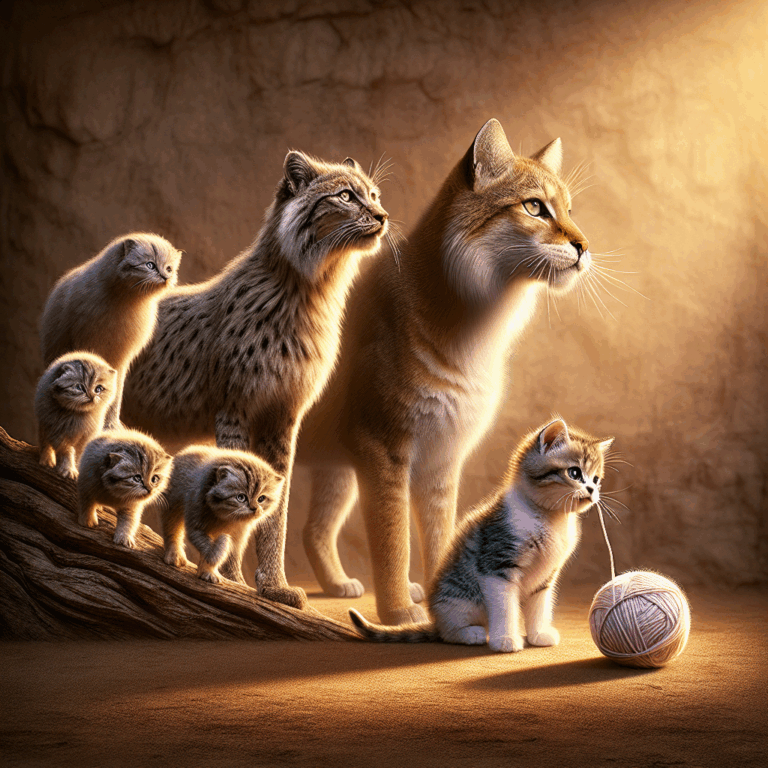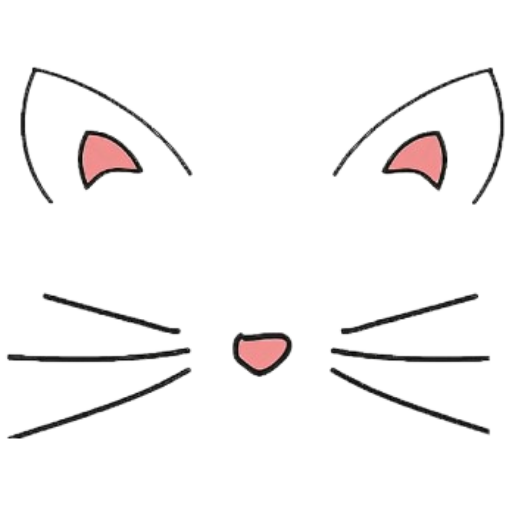The Evolution of Feline Domestication: From Wild Hunters to Beloved Companions
- No Comments
Throughout history, cats have transitioned from wild predators to cherished household pets, a journey that has spanned thousands of years and various cultures. This evolutionary odyssey is not just a tale of adaptation, but also of mutual benefit and companionship between humans and cats. The domestication of cats is believed to have begun around 9,000 years ago in the Near East, where the first agricultural societies were established. As humans settled and began storing surplus grain, they inadvertently attracted rodents. This abundance of prey in turn attracted wildcats, who found the early human settlements to be ideal hunting grounds.
Unlike dogs, whose domestication involved significant human intervention, cats largely domesticated themselves. They evolved from their wild ancestors, Felis silvestris, into Felis catus, the domestic cat, through a process of natural selection. The cats that were less fearful of humans and more tolerant of close contact gained access to resources around human settlements, such as food and shelter, giving them a distinct survival advantage.
Genetic studies have shown that domestic cats have retained many of the traits of their wild ancestors. This genetic closeness is evident in their behavior; domestic cats are still adept hunters and exhibit strong territorial instincts. However, over time, domestic cats have developed unique traits that distinguish them from their wild counterparts. These include a greater diversity in coat patterns and colors, as well as a more social disposition towards humans and other animals.
The role of cats in human societies has also evolved. In ancient Egypt, cats were revered and often associated with deities such as Bastet, the goddess of home, fertility, and domesticity. They were considered sacred and were often mummified and buried with their owners. In contrast, during the Middle Ages in Europe, cats were linked to superstition and witchcraft, leading to their persecution. Despite these fluctuations in their social standing, cats managed to maintain their presence in human societies due to their valuable pest control abilities.
The modern era has seen a significant shift in the perception of cats. They are no longer just utilitarian animals but have become integral members of the family. This change is partly due to the growing understanding of animal welfare and the recognition of the emotional bonds that can form between humans and their pets. Today, there are over 500 million domestic cats worldwide, with a variety of breeds ranging from the elegant Siamese to the robust Maine Coon. Each breed, while sharing a common ancestry, has been selectively bred for specific traits, adding to the diversity and richness of the feline world.
There is no doubt that cats have left an indelible mark on human culture. From their depiction in art and literature to their ubiquitous presence on the internet, cats continue to captivate and charm people across the globe. Their independent nature, coupled with their affectionate companionship, makes them beloved pets in households around the world.
As we continue to study the evolutionary journey of cats, it is clear that their relationship with humans is one of mutual respect and benefit. The domestication of cats is a testament to the adaptability and resilience of these creatures, whose mysterious allure continues to enchant us. As we share our lives with these remarkable animals, it is important to remember the ancient origins of our feline companions and appreciate the unique bond we share with them.

Throughout history, cats have transitioned from wild predators to cherished household pets, a journey that has spanned thousands of years and various cultures. This evolutionary odyssey is not just a tale of adaptation, but also of mutual benefit and companionship between humans and cats. The domestication of cats is believed to have begun around 9,000 years ago in the Near East, where the first agricultural societies were established. As humans settled and began storing surplus grain, they inadvertently attracted rodents. This abundance of prey in turn attracted wildcats, who found the early human settlements to be ideal hunting grounds.
Unlike dogs, whose domestication involved significant human intervention, cats largely domesticated themselves. They evolved from their wild ancestors, Felis silvestris, into Felis catus, the domestic cat, through a process of natural selection. The cats that were less fearful of humans and more tolerant of close contact gained access to resources around human settlements, such as food and shelter, giving them a distinct survival advantage.
Genetic studies have shown that domestic cats have retained many of the traits of their wild ancestors. This genetic closeness is evident in their behavior; domestic cats are still adept hunters and exhibit strong territorial instincts. However, over time, domestic cats have developed unique traits that distinguish them from their wild counterparts. These include a greater diversity in coat patterns and colors, as well as a more social disposition towards humans and other animals.
The role of cats in human societies has also evolved. In ancient Egypt, cats were revered and often associated with deities such as Bastet, the goddess of home, fertility, and domesticity. They were considered sacred and were often mummified and buried with their owners. In contrast, during the Middle Ages in Europe, cats were linked to superstition and witchcraft, leading to their persecution. Despite these fluctuations in their social standing, cats managed to maintain their presence in human societies due to their valuable pest control abilities.
The modern era has seen a significant shift in the perception of cats. They are no longer just utilitarian animals but have become integral members of the family. This change is partly due to the growing understanding of animal welfare and the recognition of the emotional bonds that can form between humans and their pets. Today, there are over 500 million domestic cats worldwide, with a variety of breeds ranging from the elegant Siamese to the robust Maine Coon. Each breed, while sharing a common ancestry, has been selectively bred for specific traits, adding to the diversity and richness of the feline world.
There is no doubt that cats have left an indelible mark on human culture. From their depiction in art and literature to their ubiquitous presence on the internet, cats continue to captivate and charm people across the globe. Their independent nature, coupled with their affectionate companionship, makes them beloved pets in households around the world.
As we continue to study the evolutionary journey of cats, it is clear that their relationship with humans is one of mutual respect and benefit. The domestication of cats is a testament to the adaptability and resilience of these creatures, whose mysterious allure continues to enchant us. As we share our lives with these remarkable animals, it is important to remember the ancient origins of our feline companions and appreciate the unique bond we share with them.


